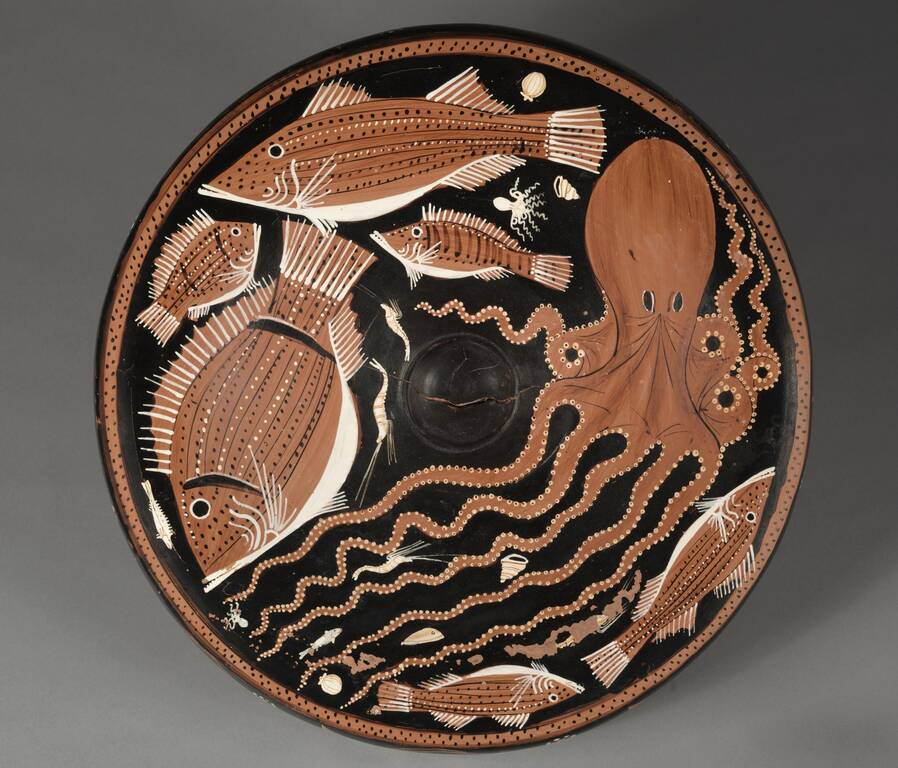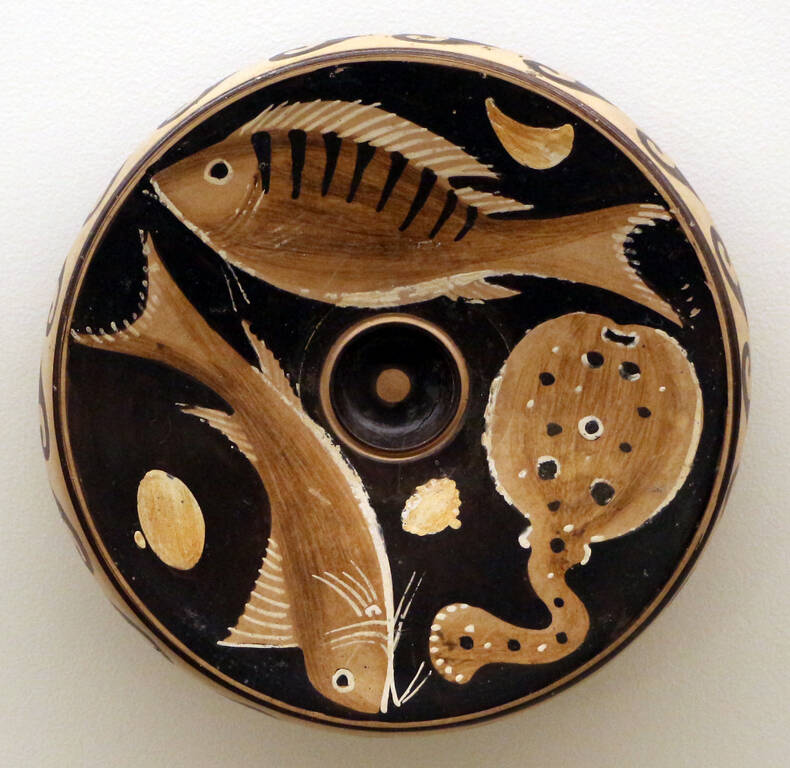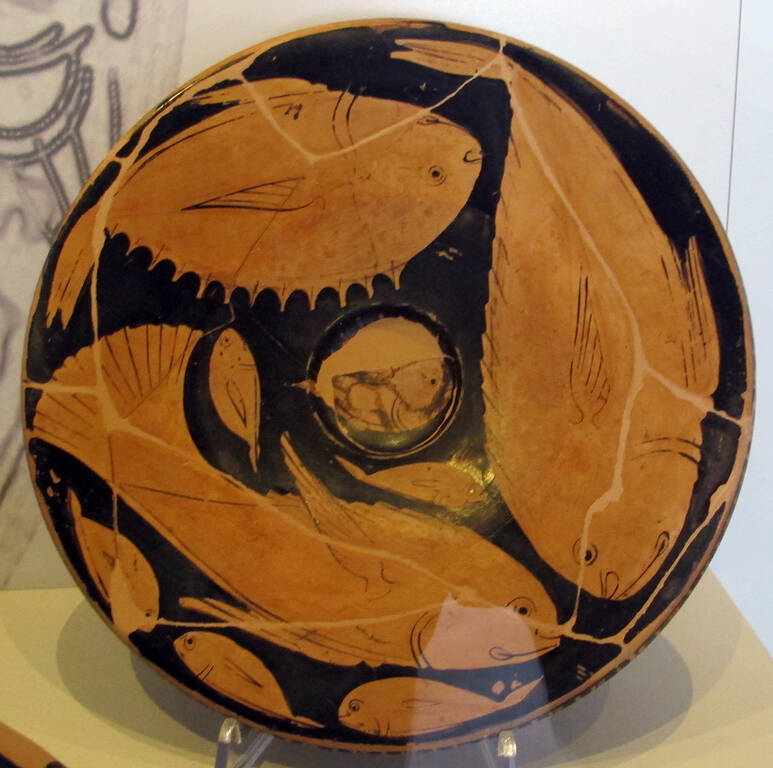
Approximately in the 5th century. BC e. in ancient Greece, a new type of dishes appeared - flat-shaped fish dishes with a small indentation for the sauce in the center. These painted plates depicting river and sea life quickly spread throughout the Hellenistic world after their appearance in Athens. Most of the surviving artifacts were found mainly in southern Italy.
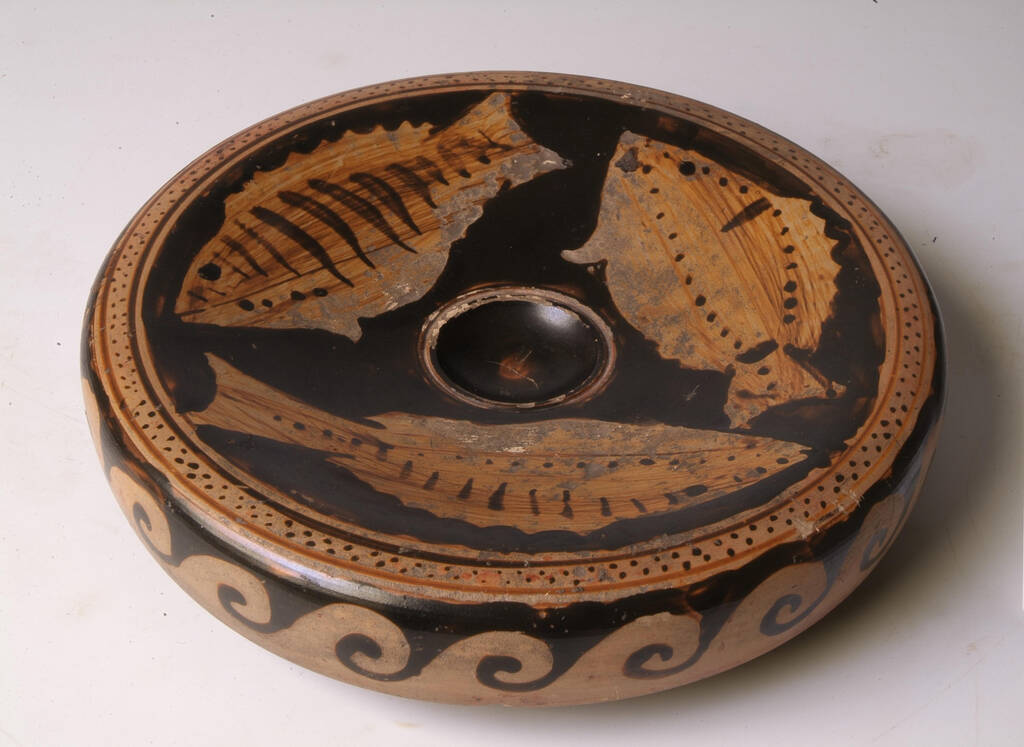
The main difference between Attic plates and South Italian ones is the arrangement of the drawings. Athenian artists depicted fish in such a way that their bellies were directed towards the outer edges. On more colorful Italian dishes, the fish bellies are oriented towards the center. Masters produced such dishes in Paestum (Poseidonia), Taranto (Spartan Taras), Kumah and other cities. As a rule, products are classified according to the places of their manufacture; Campanian, Pestan, Apulian variants are known.
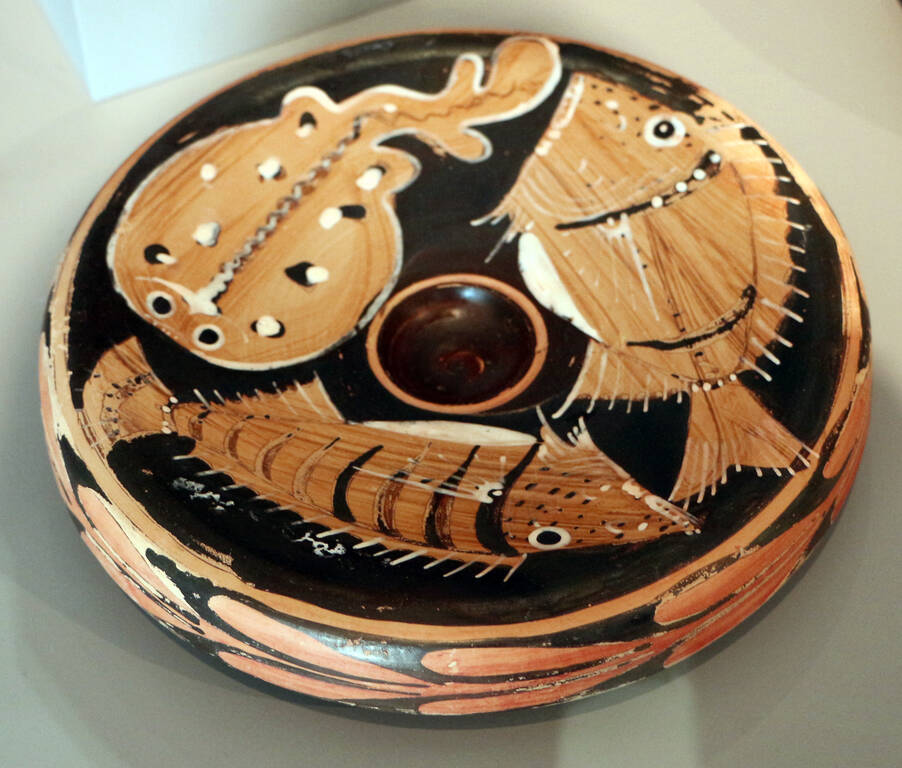
Fish dishes belong to red-figure ceramics. Some samples are painted using dark red, pinkish and yellow colors. Sometimes on the dishes there are images that are predecessors of the trompe-l'œil style (trompe-l'œil, or blende), characteristic of later Greco-Roman mosaics and painting. There is an opinion that the drawings should have corresponded to the seafood that was laid out on them.

The dishes found in the burials probably became symbolic offerings to the gods for the dead. Or the dishes belonged to the buried during their lifetime, and then had to serve them after death in the other world. Plates of this type continued to be produced until the late Hellenistic period, however, already without drawings.
